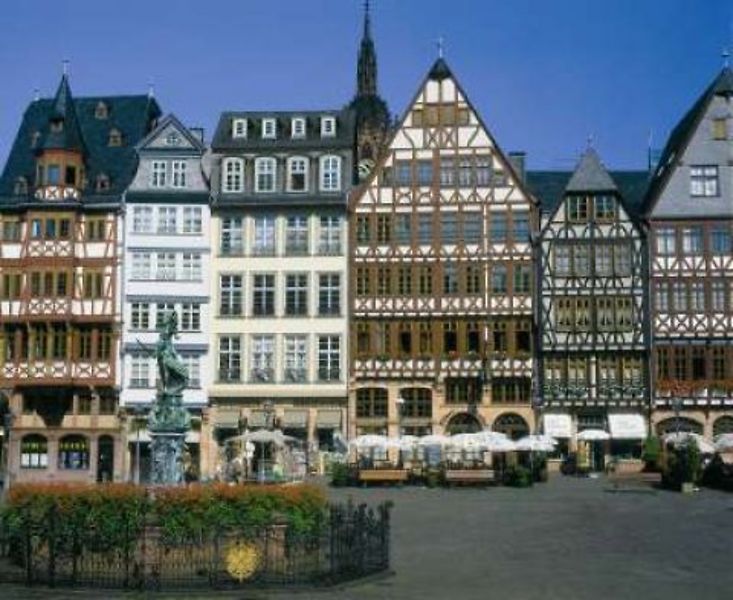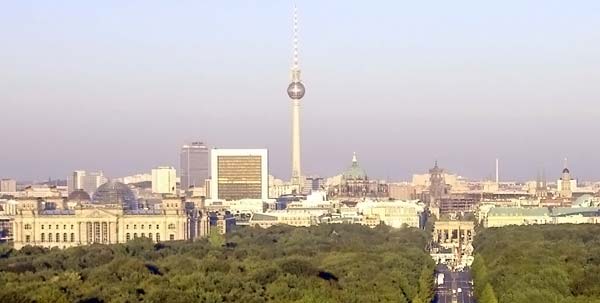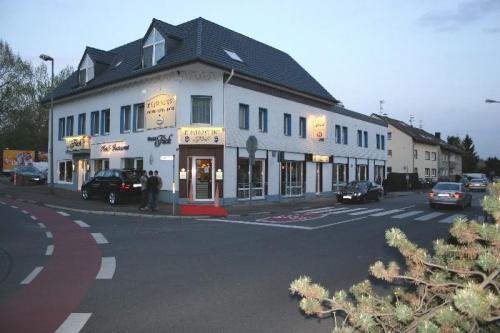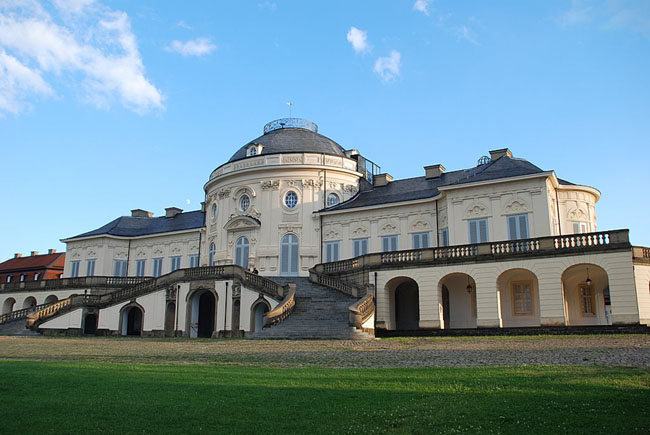

Capital: Berlin
Population: 82 million.
Language: German
Religion: Catholic
Currency: Euro
Visa: required, Schengen
"Heart" of Europe, one of the most interesting and the most developed
countries of the world, the birthplace of famous kings, poets and
musicians. This is the Middle Ages and modernity, openness and
hospitality, a centuries-old history and culture, architecture, and
monuments, unique shape of cities and unique natural landscapes,
excellent quality hotels and high level of service, a variety of local
dishes and beers.
Holidays in Germany - a journey across the country and the ideal order
of business scope, treatment and recovery in the resorts of Bad Orb,
Wiesbaden, Baden-Baden, skiing on the slopes of Garmisch - Partenkirchen,
Berchtesgaden, Oberstdorf, the Black Forest, a unique tour of the sights
of Berlin, Munich , Koblenz, Frankfurt and Hamburg.
Tours in Germany - a familiarity with the treasures of history, theater,
museums, amusement parks, fine restaurants, bustling pubs, international
sports competitions, participation in the colorful street festivals and
traditional Christmas markets with the lights of fireworks, a great
vacation on the lake with crystal clear water and beautiful sandy
beaches.
Climate in Germany
Germany belongs to the
zone of moderate continental climate. Winters are not very cold - the
average January temperature is about 1 degree, and the average minimum
temperature is -3 degrees. Of course, there are years when the rear of
cyclones to the country for a long time, it is arctic air. In this case,
the temperature can drop to -10 and even -15. Northern areas, which are
influenced by the warm "breathing" Atlantic, characterized by higher
winter temperatures. In the east, with increasing degree of continental
climate, winter temperatures often drop below 20 degrees. Warmest summer
months are July and August, with average temperatures of 18 - 20
degrees, the maximum temperature recorded in the east and reaches 30
degrees. For spring characterized the so-called "return of cold
weather," when, after a warm spring day, a sharp drop in temperature.
Germany is often visited by cyclones, so much rainfall throughout the
year, but still have them up for the summer. In the mountains the
temperature a few degrees lower, and more precipitation than the rest of
the territory.
Best time to visit:
The best time to visit the resort - July and August. While these months
are not excluded rain, but it is the warmest time of the year. For
downhill skiing is the most suitable period from January to March.
Traditions of Germany
Germany - a country which
is different thoroughness and accuracy in all that, however, does not
prevent tourists feel comfortable if certain simple rules. The main
thing when dealing with a German - is a courtesy. Greeting "Hutten Tag"
and sincere smile will help to make contact with almost any resident of
Germany. But do not forget that the Germans do not like too violent
displays of affection, so there neobhodimostipozhimat hands and cuddle
with friends, who met each other on the street, only a simple nod of his
head. Furthermore, when dealing with the German should not too close,
not to break the so-called personal space.
Germans go to bed early, in this regard, calls after 21:00 it is better
not to do, it is appropriate to call in the morning, starting from
07:00, Saturday night call is highly undesirable, as the Germans prefer
to devote this time only family.
It is undesirable to go on a visit to the German without warning, as the
rules of the meeting agree beforehand, is a manifestation of good form,
if a guest takes leave first, the next day decided to give thanks for
the welcome writing, by phone or in person.
Germans are very punctual, so it is advisable always to be on time,
otherwise will have to apologize for a long time.
Smoking in Germany is regulated by law, however, along with the federal
postanovleniemo ban smoking in federal institutions and in public
transport, there are several laws that apply only to specific lands. For
example, smoking is allowed in Bavaria in the beer tent, in Saxony - in
small bars where the owner himself serves its guests.
Germans are very strict with any, even the most minor offenses, the
fines are very high, for example, public transport without a ticket can
cost 60 euros.
In Germany made clear plan their working hours, so on any business
meeting must be negotiated in advance, preferably in a few days.
Internationally known German quality. If an entity is taken for the
order, you can be sure - it's done well and on time.
To dress in Germany dual attitude. On the one hand, the Germans, like
most Europeans, seek to ensure that the clothes were comfortable and
functional. Particularly liberal in this respect young people - prefer
T-shirts and jeans. On the other hand, clothing - a card of the
profession. Businessmen wear suits and ties strict tones. Many
receptions taken to indicate the desired form of clothing, sometimes it
can be a coat or jacket, which can be rented. But in any case, for the
present German determining factor in the choice of clothing will ease
and accuracy.
Attractions in Germani
Leipzig

Leipzig - XIII century citadel, the Tower Battle of the Nations (XIX c.), Erected in honor of the soldiers who died in battle with the army of Napoleon at Leipzig in 1813, the Orthodox Church, set in the memory of the fallen Russian soldiers (XIX century), the world-famous art gallery , zoo. Bonn - the house, the birthplace of Ludwig van Beethoven, the Romanesque cathedral (XI-XIII cc.), Hall (1782), Parliament (1950), Villa Hammerschmidt (residence of the President of the country), Schaumburg Palace (the residence of the Federal Chancellor ), the palace Poppelsdorf the botanical garden.
Bad Hennig
 Bad Hennig - hot springs,
large thermal swimming pool (both public and private), Arenfels castle
(built in the XIII century., Rebuilt in 1849-1855 gg.).
Bad Hennig - hot springs,
large thermal swimming pool (both public and private), Arenfels castle
(built in the XIII century., Rebuilt in 1849-1855 gg.).
Scattered throughout Germany thousand beautiful medieval castles -
Raynfels (1250), Sunek (1010), in the XIII century, the infamous center
of knights-robbers, Reichenstein (near Trehtingskhauzen) Raynbraytbah,
Aynbraytbah, Loysdorf - castle with four towers, the former royal
palace, Stolzenfels, Lanek (XIII c.), two ruined castles - and
Shterrenberg Liebenstein (XI and XIII centuries.) in Kamp-Bornhofen in
Marksburg well preserved Hall of Knights, ladies room, chapel, weapons,
chastity belt etc. Martinskapelle chapel with beautiful views of the
castle and the Rhine.
Significant cultural value are monuments of the Roman city of the era:
Manz - the capital of the Roman province, Koblenz - Roman fortress,
Remagen, Andernach - a tower 49 meters high with walls 3.5 meters thick,
the old city wall (fortifications), the old Rhine crane (dated year
1554), Boppard - the remains of the citadel, and other
Cities in Germani
Berlin
 Berlin - this
is the same name of the federal center of Germany. Area of the
administrative district of more than eight hundred square kilometers. It
has a population of about three and a half million people.
Berlin - this
is the same name of the federal center of Germany. Area of the
administrative district of more than eight hundred square kilometers. It
has a population of about three and a half million people.
By itself, as a city, Berlin is quite an interesting mix of different
architectural styles. The structure consists of various communes and
villages. Berlin is rich in forests and parks. This is a peculiar
agglomeration, which stretches for 45 kilometers from west to east. From
north to south the length of about 40 kilometers. The city was founded
on the banks of the picturesque and pristine rivers Spree.
The beginning of the historical development of the settlement relates to
a distant sixth century AD. At that time, on the banks of the River
Spree lived ancient Slavic tribes. There were two. One of them is in the
twelfth century, formed a commune Colin. It was located on an island in
the river. Second Slavic tribe later on the right bank of the Spree in
Berlin built a commune. After several decades of both communes unite
under a common management. It was located on the bridge that connects
them. Today it is called Rathausbryukke.
More detailed view of the medieval Berlin can be obtained by visiting
the district of Berlin-Mitte. This is the land located between the
district and administrative Molkenmart Myulendamm lot. Today this place
is symbolic of honor took the podium Fusion Centre Berlin. Why come here
when visiting this city a must for each tourist.
Here gaze history buff offers excellent views of the castle wall
Cologne, which was built in the Middle Ages. True, much of this monument
has been destroyed. But the company is actively working on its
restoration. Real decoration of this place is the medieval church
Marienkirche on the Neuer Markt. This structure symbolizes freedom and
independence of Germany.
Enormous contribution to the Berlin made the Hohenzollern dynasty. In
the fifteenth century the city became its capital. At that time, its
population was only two hundred thousand people. In just a hundred years
they have managed to increase this figure by almost four times.
Further growth of the city continued in the eighteenth century. During
this period, the city wall was rebuilt. Under its protection, including
many surrounding communes. The peak of fame Berlin has the flourishing
of Prussia. At that time, ruled by King Frederick the Great. He managed
to make a real capital berlin contemporary Europe. This is where the
spread new ideas and cultural development. Here mature dogma of the
Enlightenment. During this period, Berlin is actively built, built
numerous palaces and churches, private homes of wealthy people and
social structures. Here are concentrated the best scientists of the era.
Berlin even greater elevation above all other lands in Germany brought
the industrial revolution and the entry into the European customs union.
The city then was a center of trade and crafts. In the late eighteenth
century, the population of Berlin has exceeded the mark of 1.5 million.
people.
Who ruled at that time King William II laid a solid foundation of
military and economic power of the Reich. This enabled soon unleash the
First World War. The revival of the new Berlin is associated with
lesions in this bloody exhausting war. After the defeat of the king
abdicated his throne. Power in the country was occupied by the first
republic. However, the talk of democracy was still too early. The newly
formed government, do not hesitate to massacre the uprising Spartans.
But then to the Land of Berlin joined seven communes. This lays a solid
foundation for the rebirth of the city and the start of construction of
its new modern look. In the early twentieth century New York - it's a
great, rich city which is the capital of the newly-fledged republic
Veymark.
The relative freedom of thought which prevailed in this city ever since
its foundation, has become a breeding ground for cultural and spiritual
development of its people. There is always in full swing boiled and
raged intellectual and creative thought. Here was a true European center
where wanted to come all great scientists, writers, artists and
thinkers. With this in the Middle Ages Berlin easily took the place of
the world entertainment and amusements bohemians. Gathered here all the
fans of avant-garde theater and life.
Berlin gave the world celebrities such as S.Tsveyg and T. Mann. These
writers tell some incredible stories that they could come to a head only
in this magnificent city. It also increased and many celebrities in the
field of painting. These are artists Kandinsky and Dix. A huge number of
stars scientists world famous long live and work in the fertile lands of
Berlin. Hall of Fame scholar light this city proud names such as
Einstein, Koch, Bosch, Bering, and many others.
Today Berlin is a worthy continuation cultural and scientific
traditions, which are incorporated here in the Middle Ages. However, the
historical route of the city was going to happen disaster.
Leverkusen
 Leverkusen - an industrial city in Germany, located in North Rhine -
Westphalia, on the Rhine, between Düsseldorf and Cologne. The population
for 2005 was 161.3 thousand.
Leverkusen - an industrial city in Germany, located in North Rhine -
Westphalia, on the Rhine, between Düsseldorf and Cologne. The population
for 2005 was 161.3 thousand.
Leverkusen - is the main department of pharmaceutical company "Bayer"
and the football club of the same name, it is aspirin, a flying saucer,
Japanese gods and the world's great TV.
This city is the oldest, beautiful and picturesque Japanese garden in
the world, which, as if to contrast it is surrounded on all sides by
industrial pipe mill plants. In this garden you can understand the whole
philosophy of Japan, especially if you come back in the spring when
trees and plants are in bloom, it stunningly beautiful. The beauty of
the Japanese Garden is beginning to hit the visitor from the main
entrance.
Football fans can visit the stadium and feel as a football fan. You can
also visit the bar and cheer for a beer at the monitor screen, which
broadcasts the game.
In 2010, in March, in the center of Leverkusen opened a new shopping
center and the main city hall. In the construction of the building were
used new technology, and it looks quite impressive. The roof of the town
hall with similar UFO unrealistic dimensions, and at night it glows
because the building there are many cafes and boutiques that give this
unearthly light.
Stuttgart
 Stuttgart
- one of the major economic centers of the country and the location of
numerous high-tech companies, known around the world. They include such
global corporations as DaimlerChrysler, Porsche, Bosch, Hewlett-Packard
and IBM, as well as many innovative medium-sized businesses.
Stuttgart
- one of the major economic centers of the country and the location of
numerous high-tech companies, known around the world. They include such
global corporations as DaimlerChrysler, Porsche, Bosch, Hewlett-Packard
and IBM, as well as many innovative medium-sized businesses.
Cars - the first thing people remember the tens of thousands in Germany
and abroad, hearing the name "Stuttgart". Because this city - the
birthplace of the oldest companies producing cars. Activities associated
with Stuttgart Gottlieb Daimler and Karl Benz, Wilhelm Maybach and
Ferdinand Porsche. Automotive history is represented in museums,
Mercedes-Benz, Porsche Museum, the Museum-workshop of Gottlieb Daimler.
Historical note: In 1886, Gottlieb Daimler and Wilhelm Maybach in
Stuttgart built the first carriage, equipped with a homemade gasoline
engine, and a year later she had her first ride on the route Stuttgart-Cannstatt
a speed of 18 km / h
Karl Benz in 1879 launched the first two-stroke internal combustion
engine. In 1885, he equipped gasoline engine three-wheeler, the
invention was recorded January 29, 1886 the Imperial Patent Office.
After the death of Gottlieb Daimler in 1926, the company "Benz & Cie."
and "Daimler Motorengesellschaft" merged into Daimler-Benz AG, now -
Daimler-Chrysler.
Ferdinand Porsche from 1922 was the chief designer at the Daimler
factory, and later - the technical director and board member. It was he
who developed the legendary sports car Mercedes SS and SSK. In 1931 he
founded his own design office in Stuttgart, Porsche, the forerunner of
the modern firm Dr. Ing. h. c. F Porsche AG.